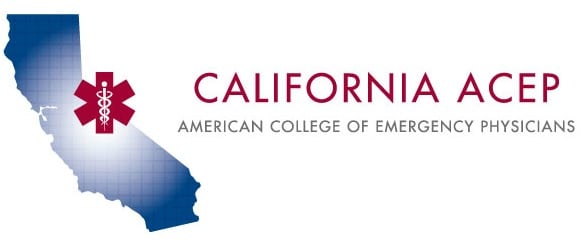Mission
California ACEP’s mission is to support emergency physicians in providing the highest quality of care to all patients and to their communities.
Vision
California ACEP’s vision is that all people in California have timely access to high-quality emergency care, which is recognized as an essential public service. The emergency physician is the recognized leader and coordinator of a healthcare team capable of a comprehensive response to the medical needs of our patients and community. We promote and protect the personal and practice rights, safety, wellness and longevity of emergency physicians.
Lifeline
Lifeline is California ACEP’s monthly publication, reaching more than 3,000 readers – from policymakers to community physicians. Lifeline has a nearly 40 year history of keeping California ACEP members and Lifeline readers up-to-date on all things emergency medicine. The publication contains articles pertaining to clinical, legal and political issues, as well as Classified and Display ads. Lifeline can be found here.
Health Care Research Studies
These can be viewed here.
Advocacy
California ACEP and its staff advocate for emergency medicine in the legislative, legal, regulatory and political arenas. Each year California ACEP sponsors legislation, lobbies members of the California legislature, conducts emergency department tours, participates in legal cases – sometimes as a plaintiff, sometimes through amicus briefs – and lobbies and advises regulatory agencies. California ACEP’s sponsored political action committee (Emergency Medical Political Action Committee) makes campaign contributions to endorsed candidates. Historical achievements range from California EMTALA standards to seat belt laws to the establishment of Maddy Emergency Medical Services Funds. Today’s ambitious advocacy activities of California ACEP, ranging from patients’ access to emergency care, procedural sedation, fair payment from payers, and boarding and crowding, are among the most successful in the house of medicine. Read here for more information.
The Western Journal of Emergency Medicine has compiled a list of articles related to ED Administration, Public Health, Health Advocacy, Physician and Patient Interactions and Funding/ED Insurance. These articles have been published in WestJEM in previous issues and can be viewed below:
ED Crowding
- Financial Impact of Emergency Department Crowding (May 2011)
- Ten Solutions for Emergency Department Crowding (January 2008)
- Boarder Patrol: A Reform Policy for America’s Paralyzed Emergency Departments (November 2009)
- Crowding and Delivery of Healthcare in Emergency Departments: The European Perspective (November 2009)
- Higher Inpatient Medical Surgical Bed Occupancy Extends Admitted Patients’ Stay (May 2009)
- Occupancy Rates and Emergency Department Work Index Scores Correlate with Leaving Without Being Seen (September 2010)
- Applying Lean: Implementation of a Rapid Triage and Treatment System (May 2011)
- Cognitive Impairment among Older Adults in the Emergency Department (February 2011)
- Emergency Department Crowding: Factors Influencing Flow (February 2010)
Public Payer Funding
Surge Capacity
- Effect of Hospital Staff Surge Capacity on Preparedness for a Conventional Mass Casualty Event (May 2010)
Patient Satisfaction
- Patient Satisfaction and Return to Daily Activities Using Etomidate Procedural Sedation for Orthopedic Injuries (May 2008)
- Those Who Can, Do and They Teach Too: Faculty Clinical Productivity and Teaching (May 2011)
- How Accurately Can Emergency Department Providers Estimate Patient Satisfaction? (September 2012)
Length of Stay
- Learning to Use an Emergency Department Information System: Impact on Patient Length of Stay (September 2010)
- Time Series Analysis of Emergency Department Length of Stay per Eight-hour Shift (May 2012)
- Impact of an Expeditor on Emergency Department on Patient Throughput (May 2011)
- Analysis of the Literature on Emergency Department Throughput (May 2009)
- Impact of Resident Physicians on Emergency Department Throughput (September 2010)
Insurance
Electronic Medical Record
Work Productivity
- Measuring Emergency Physicians’ Work: Factoring in Clinical Hours, Patients Seen and Relative value Units into One Metric (May 2012)
- Physician Assistants Contribution to Emergency Department Productivity (May 2012)
Psych Admission
- Value of Mandatory Screening Studies in Patients Cleared for Psychiatric Admissions by Emergency Physician History and Physical Examination (November 2012)
- Impact of the Mental Health Care Delivery System on California Emergency Departments (February 2012)
Contact
Visit California ACEP’s website here.
Mailing Address:
American College of Emergency Physicians
1121 L Street, Suite 407
Sacramento, California 95814
Email: info
Phone: 916-325-5455
Fax: 916- 325-5459
Updated July 21, 2015



